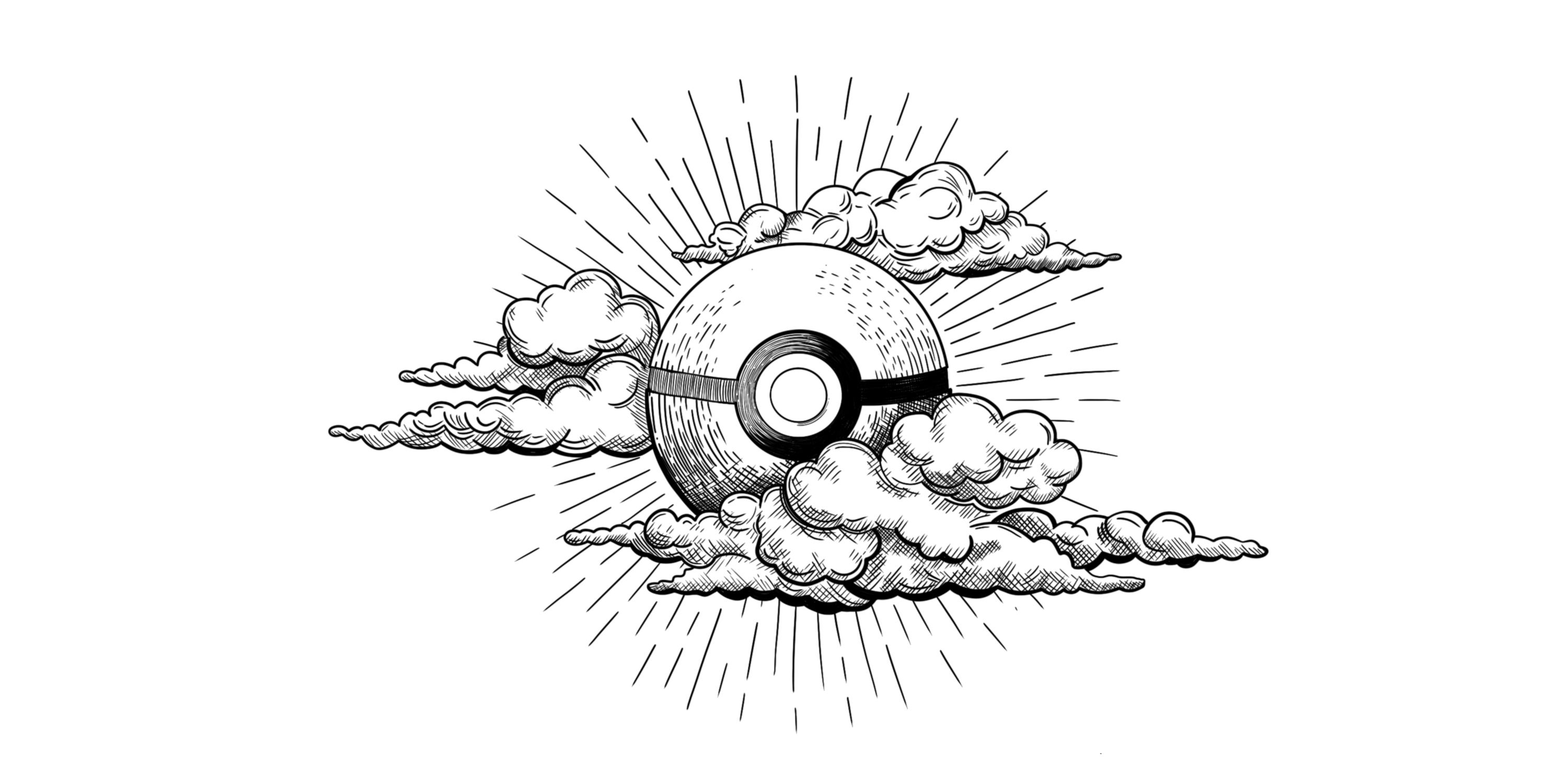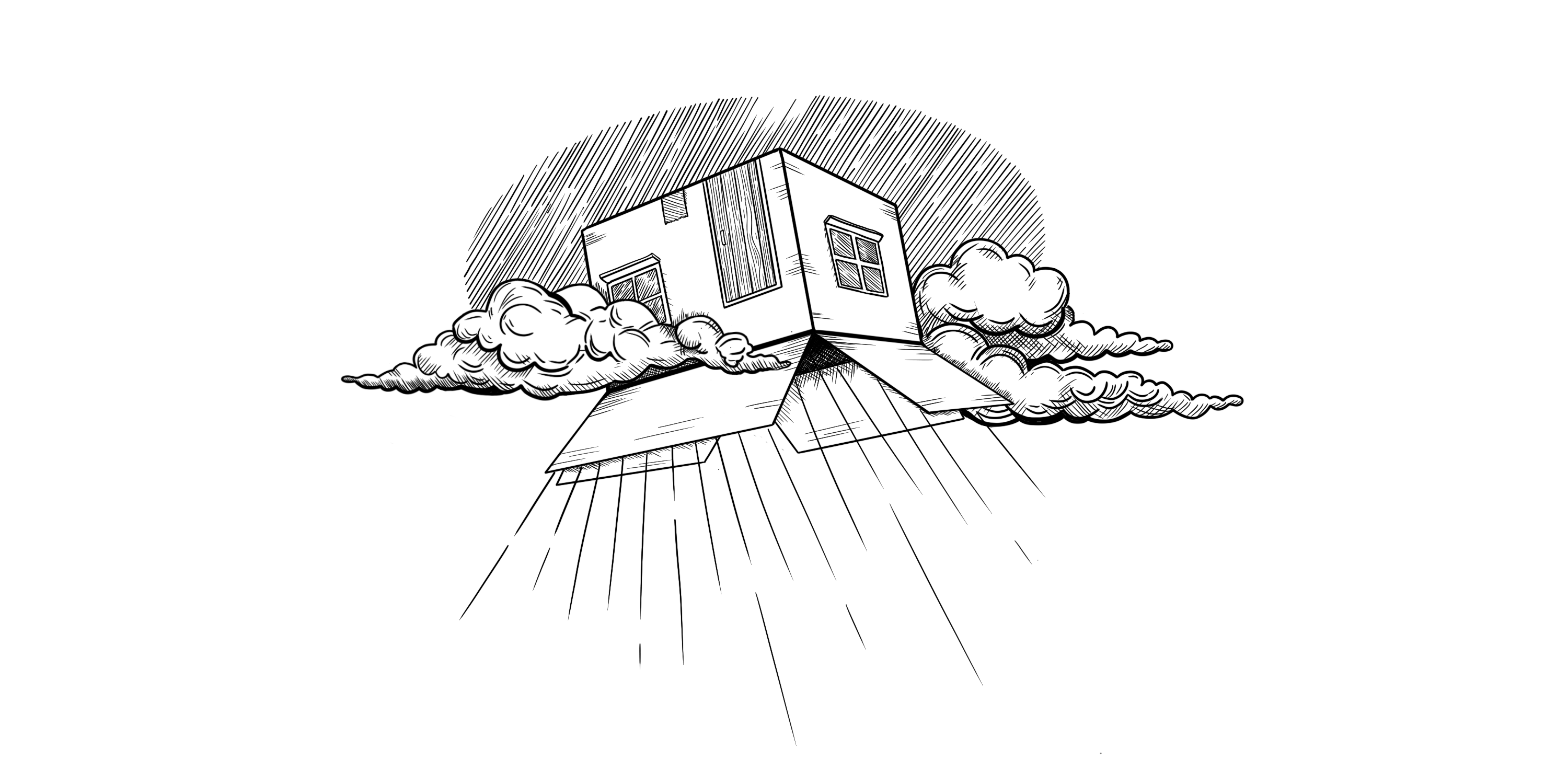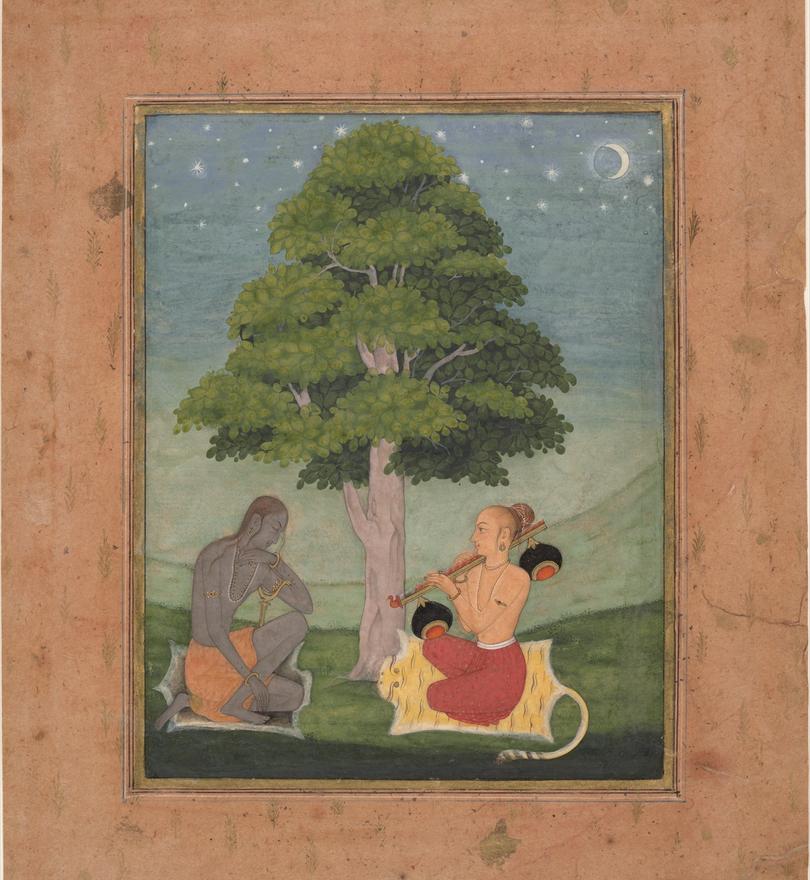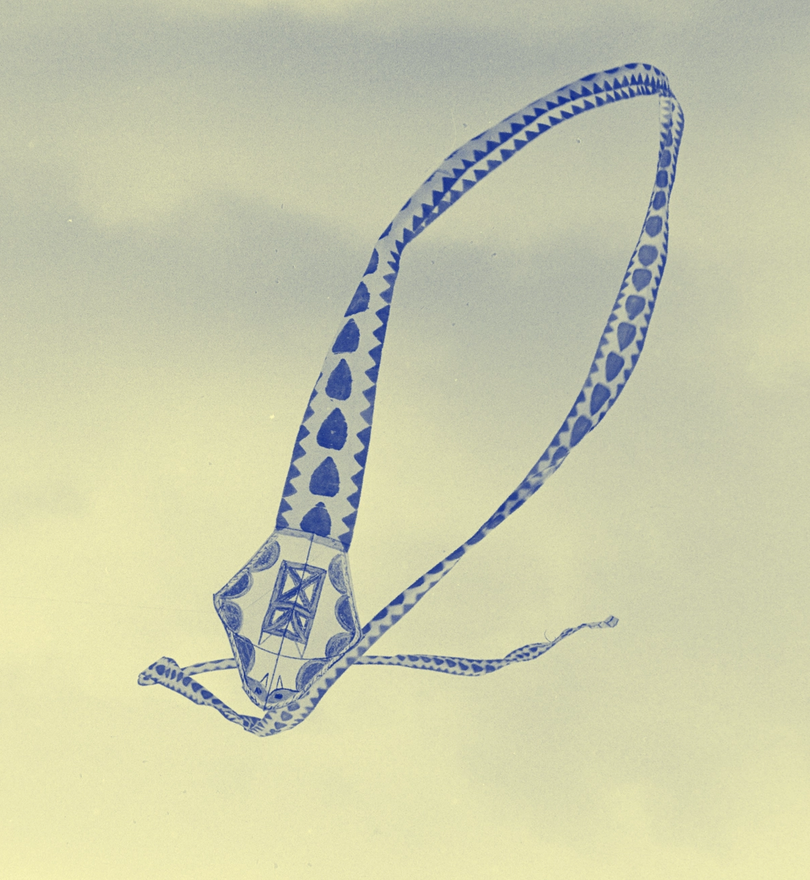
We cross the world in more ways than ever before, but what happens to us along the way? We’re pleased to present this piece by Singapore-born, Aotearoa-raised writer Tan Tuck Ming, first published in The Iowa Review (Volume 53, Issue 2, Fall 2023), in the United States, where he now resides.
A common misunderstanding is to think of the central relation of the Pokémon universe as between the person and the Pokémon, when it is actually the story of the Pokémon and the Pokéball. It has never been about the Pokémon as a creature. When an individual commits to the game’s fantasy, they are committing wholly to a system of life in which a creature can be contained within a ball. Since 1996, the main ritual of the game has remained the same: A creature exists and a ball is thrown. The ball splits into two hemispheres and opens into light; the whole being vanishes into the ball. There is no surplus, no dismemberment, no blood — a seamless capture leads to an impossible possession. If, according to literary theorist Darko Suvin, the novum of a science fictional world is the imaginary device or element ‘so central and significant that it determines the whole narrative logic’, estranging us from reality while forcing a meaningful glance back, then the novum must be the ball and then, only at a secondary level, the creatures — strange, like a zorse or a roomba, mostly as liminal figures. As the novum, the ball is a technology with a dream’s logic, sublimated yet constitutive like the geologic, the bone, the internet. Its opacity means that there is no clear explanation of what is happening inside of it. Today, you are trying to understand its metaphysical facts. What you know: A hand is ontologically only a hand, bound to the quantities of time and space, but the ball is as if a hand was dreaming, wide and spacious enough to hold anything. Its omniscient grasping. In Taipei, an elderly man they call the Pokémon Go Grandfather cycles around the city at all times of the day, the bicycle’s handlebars supporting a contraption with 64 smartphones. He catches Pokémon as they materialise in the augmented reality of the screen, passing quivers of data made visible before 64 separate balls on 64 individual screens. Perhaps this is the dream of having 64 hands, to touch something 64 times, to enter a scene 64 times. You watch him use the ball to vanish a steel monolith or a turtle-shaped island at the same rate and in the same motion as he would an ice-cream cone. In the repeated motion, there is pleasure of a hunger that can be consistently met, a pleasure of holding that is inextricable to the pleasurable memory of being held. It is an unquestionable desire. The ball is like a hand closed beyond itself, a fist that can hold anything, that can, in its action, appropriate everything into its own form. There is almost something fascist about it. Maybe the proper analogy would be a spectacular mouth.

the ball is as if a hand was dreaming, wide and spacious enough to hold anything
The interesting part is that you can never tell who is playing the game. There are the ambling teenagers walking with the tops of their heads facing forward, the grandmother resting on a bench outside a church, the carpenter who you meet buying a chair on Craigslist, the trucker with the red cap in the queue at the gas station. While you lie awake in bed, something appears on your phone. You throw a ball at a Poliwag, a Sudowoodo, a Trubbish, a Slowpoke. Or, by their loose resemblance, a tadpole, a thick tree, a trash bag, a telepathic salamander. The ball quietly ingests a tadpole, a thick tree, a trash bag, a telepathic salamander. In this way, the ball is a capsule that functions like a sign, abstracting the sundry of the world into a single plane, like money or rain or language. How big it can be inside a word and then where the word can take you. You think of all the other times you have thrown a ball. Not the right ball, but what if it had been? Once, you threw a ball at a ball and then you threw a ball at a truck and then you threw a ball at a wall. You threw a ball at a street and then repeatedly at the front door. The ball went to the sky and then it fell down through the air. You threw a ball at a bush and the bush held a dead bird. You threw a ball at your crying sister and you threw a ball at yourself, and then toward the earth. Throwing, you believe, is a natural instinct preceding the verbal state. But what is the ball really doing? There is its outward phenomenon, the short-term blunt impact of the ball, which is to make a thing which is there not there. So instantaneous that under different circumstances, it might be considered a death, an obliteration, the way that change enacted too rapidly is a violence. The distinction between lightning and a light traveling years through a vacuum to softly articulate a room, a mountain hole. To the ball’s unseen space, you can only tender an assumption. For instance, to think of the ball recursively, as a container for life, an extraordinary sphere-shaped storage unit. The interior blooming. Online, this is the popular interpretation, with the hierarchy of types of balls correlating to a hierarchy of living conditions — the interior of an Ultra Ball as a New York penthouse, a Great Ball as middle-class suburbia, the regular Pokéball as a masticated council flat. By design, you become responsible for the creature’s socioeconomic standing. The linear logic of capture exposes the ball as a separate, nonlinear realm: some other zone where time and space bends and folds, dimensions inverting and contorting like a mangled video tape, a medium of being where a head corresponds to an hour, the month of April a legbone, desire the last warm minute before nightfall. If what’s captured remains in the ball then the only possibility is that it is compressed in a sideways format.

You call your parents on Saturdays, in the country where they are always sixteen hours ahead embracing minimalism as an aesthetic and philosophy. It has been eight years since you left home, two since you were together in the same place. Each week they show you their apartment in a new state of joyful cleanness, a new iteration of pared-down living: first, the bulky television goes, then the couch, the family dining table, the wardrobe in their bedroom. A slow disassembling, like a bird being taken apart by the insects and the wind so in a matter of time what it articulates is a bird not as a body but a future. Today, your parents are decluttering your room. They proudly hold items up to the camera so you can decide whether to veto what they’ve decided is beyond use. The problem is that you are a hoarder with a slow memory — you see the keeping of a thing as insurance against yourself, that only the object can account for its own status, can remember itself. Privately, you have always been drawn to the fetish of the ball which supposes that a creature, a body, a life form or a way of being is at its essence an arrangement of data. The possibility that the ball could in some way transcribe you, extract from a rough assemblage the precise form of a binary text. In the canonical narrative of the Pokémon game, the only insight into the ball’s technological workings is via a minor character by the name of Bill, who first appears in a creature’s body because he has accidentally spliced himself at the cellular level. This is a world in which we believe such things are possible. After your avatar presses a button to re-separate Bill’s cells, he emerges in human form as a pioneering computer scientist, a Zuckerberg type. Bill describes his invention as a storage system in which all creatures caught in balls are transferred as data to a centralised server, vast and omnipresent as the cloud; from a computer, you can access them, move them freely, or keep them there forever. Bill does not explain the inside of the storage system, but outside the game, fans speculate that the caught creatures are not just ambiguities of light scattered in the cloud but are instead transported to a colossal ranch, with endlessly rolling hills and an infinite green field. The ball in Bill’s system is one node in a limitless network storing not just one entire being, but a world of entire beings. Of course the server with an inexhaustible memory is in the shape of a circle.
you see the keeping of a thing as insurance against yourself, that only the object can account for its own status, can remember itself

On the other hand is the predicament of the modern oyster, the occasional attendant for the pearl, confronted with a scarcity of materials to produce itself. On your computer, you collect files and files within folders within folders: the science of odor, photos of rat communities, Introduction to UX-UI Design handbook, high-speed rail tickets from Kyoto, Pu Tong Hua if visualised as concentric circles, a broken lease and an expired one, the Dutch oven your mother once wanted and is now in your kitchen. The adjacent folder has only PDFs: A Critique of Global Trafficking Discourse, cancelledamerican, citycitycity10!, classical-seed-patterns-2018, Contradictions, CullerApostrophe. It is possible to sort these list alphabetically, by date created, date modified, by size, by type. But the list is never in the right order; the act of retrieval is always dissatisfying. The right order — this, you think, would be a feeling. What strikes you is the fact that the creature always comes out of the ball exactly the same as it goes in. Everything about its exit is identical to its entry. The ball, from this angle, seems to cleave the wide, blank thicket of distance, so that what might be there is now suddenly here and vice versa. The ball would be to us as might have the airplane appeared at the turn of the century, or the locomotive train to the industrialists, the horse to the Neolithic man staring desperately across a Kazakh plain and his feet blistered beyond feet. In this metaphysical formulation the thick tree you caught by a garbage bin in New Orleans while waiting for your mother to finish her morning tour of the art museum is released from the ball into this year’s deep snow at the same size, the same weight, the same expression, as if completing the vacant smile it began years ago. The Sudowoodo again. The thick tree now in the Midwest and briefly possible in the present, before it returns to the ball’s oblivion. And today, your parents calling you from an unfamiliar beach they’ve walked to in the country outside the pandemic, finding oysters washed up in the surf’s haul. Their lament about how you have come to live so far from an ocean.
There are days you try to forget this vision because to always hold onto it is unbearable. And then there are days when you cannot stop remembering
How to measure the distance between two points? There is the interval between one appearance and the next, but the question is how the interval appears to the creature inside the ball, in its scrambled, undone state. Whether it is like a caught breath or deep silence, withheld yet still bound to chronological time, or if, as you suspect, the interval simply does not occur. The object not moving through a field but in two still frames, at opposite corners, the difference between these positions annihilated. Another way to describe it is as if the ball had teleported the creature, the subjective experience of which being impossible to comprehend while contained in a material body with only linear capabilities. You try to imagine another life where you are not metered in the way you are metered now, the now where you are never at the ends and always in the submerged middle, where you must travel three years and a continent in order to finish a feeling you began seeing the man riding the bus fearlessly with no t-shirt on. Instead, the feeling would dictate the sequence. Every moment of the ball would be an arrival. Tonight, when you were getting the keys to move the car, you had a sense of déjà vu: you had reached down at this angle before, thought about your lost weight from this unlit corner, held this same breath. All things were identical except your phone was not where you thought it should be. It felt like yesterday was a place you had not yet been and tomorrow you would be wakened by your mother’s snoring through the wall. One theory of teleportation hypothesises that it is at its essence not a technology of movement but transmission. In the process of converting a physical form into data and then converting the data back to a physical form in another location, the original being is destroyed and a perfect copy materialises to take its place on the other side. The mechanics of this means that what is there previously no longer exists — the transmission requires its obliteration. Perhaps then distance and the distant would no longer be the first orientation. The cleanness of such an equation is so startling, it climbs into you like a vision: never scattered in too many places and in too many bodies, never stranded as a situation, never stuck across a thought, what sounds could come out of you then? There are days you try to forget this vision because to always hold on to it is unbearable. And then there are days when you cannot stop remembering, cannot stop thinking about the ball, which is never the thing you are in. The scene with Bill in another body is a riff on The Fly, a science-fiction film in which a man teleports from one machine to another. But then a fly accidentally enters the machine with him; they begin to merge into one. That story is about his gradual transformation into a fly, the boundary between one thing and another his being makes porous. Where does he cease, when does he become? Who is speaking? ‘I’m saying I’m an insect who dreamt he was a man and loved it. But now the dream is over.’




